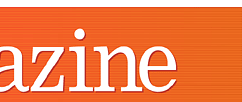|

FROM THE EDITOR
 In
this Issue In
this Issue
 Contributors Contributors
 Letters
to the Editor Letters
to the Editor
 Write
to Us Write
to Us
 Spread
the Word Spread
the Word
 Back
Issues Back
Issues
FEATURE
 Christmas
is Coming! Christmas
is Coming!
Read about Christmas traditions and words you often hear
COLUMNS
 Language
Interference Language
Interference
Friend or Foe?
Decide by finding out more about False Friends and the language learner
 Focus
on Language Awareness Focus
on Language Awareness
Introduction
Business English: CVs
UK version ¦
US version
 New
word of the month New
word of the month
Are you having trouble finding the perfect Christmas gift?
 Top
Tips for the CD-ROM Top
Tips for the CD-ROM
Use WordSearch and TextSearch to practise Christmas vocabulary
 onestopenglish.com onestopenglish.com
|
 |
by Howard
Middle
Communicating with people in a business context often
requires a more formal style than when writing to friends and family.
Similarly to business letters, which we covered in the
November issue of MED Magazine, résumés often follow set
phrases and headings.
Below you can find an example résumé and
notes explaining its features. These notes also include some useful set
phrases often used in résumés.
top
|
ROBERT BROWN
1436 ASH GROVE ROAD
MESA, AZ 85207
TEL: (480) 555-4878
(1)
E-mail: robert@mktg.ssu.com
(2)
Objective
To obtain a management position in which I will be able to use my
organizational skills and my knowledge of marketing and English.
(3)
Skills
| Familiar with Microsoft
Word and Excel |
Good
problem-solver |
| Confident communicator
|
Self-motivated |
| Able to cope under
pressure |
Fluent
in German |
(4)
Work experience
| 2000 – Present |
Marketing Assistant,
Success Solutions Unlimited, Phoenix, AZ.
Duties include planning and implementing all advertising and
promotion, responding to enquiries, monitoring student performance. |
| 1998 – 2000 |
Teacher of English,
Churchill School of English, Munich, Germany |
| August 1996 |
One month internship
in the sales department of Newton Publishing, Tempe, AZ |
(5)
Education
| Dec 1997 |
Certificate in Teaching English
as a Foreign Language |
| 1994–1997 |
Arizona State University, Tempe,
AZ: BA in English Literature and Language |
Interests
Football, sailing, reading, landscape painting
(6)
References
Available on request
|
top
Give
your name, address, and contact information. It is no longer usual to
include information on your age or marital status.
top
Make
a strong statement of what your goals are, but make sure they match the
position that you are applying for.
top
Skills relevant to the job are often listed before employment history.
Useful phrases include:
- Experienced …
- Experienced in …
- with a good knowledge of …
- Fluent/near-native command of French
- adequate spoken/written Italian
- Fully computer-literate
- Self-starter (someone who can take responsibility,
and work without supervision)
top
This
can also be called Experience or Employment history. Start
the list with your most recent job and finish with the earliest one. If
you have had many jobs, include only your relevant work experience. But
do not leave large unexplained gaps in you work history.
top
Start with your most recent degree or diploma and work backward. If you
have a college degree, it is not necessary to mention your secondary education.
Do not include details of your primary education.
top
References (the people that the employer can contact to get information
about you) can be listed either at the end of the résumé
or included in a separate letter.
top
In the next issue of the magazine
we will look at communicating by e-mail.
top
|





